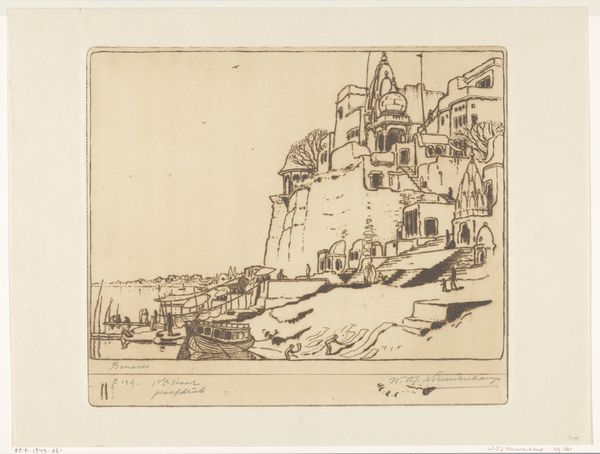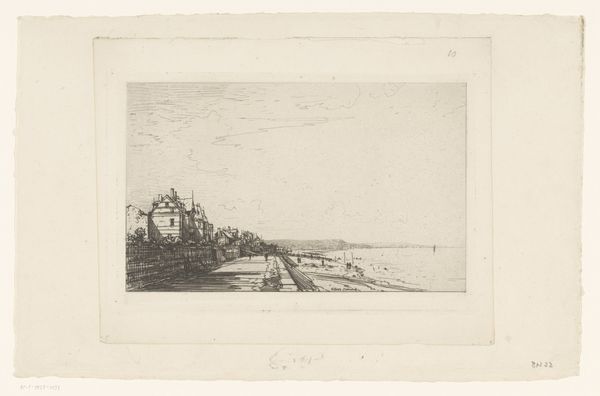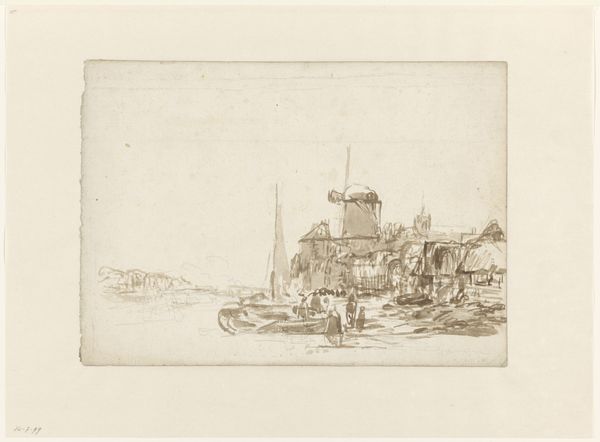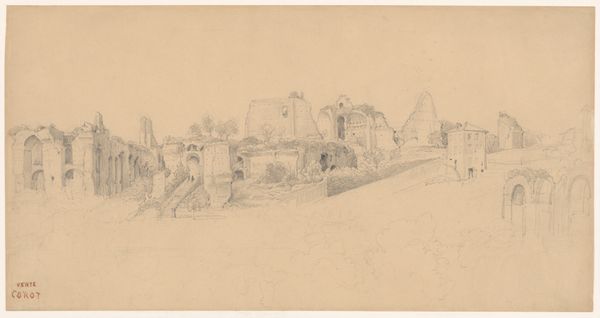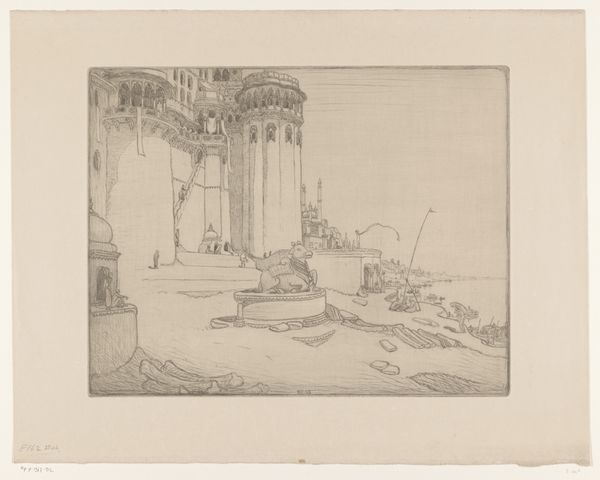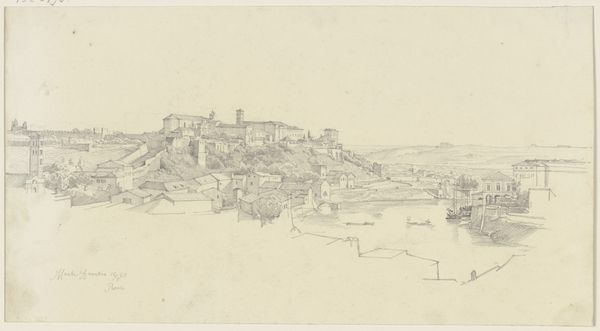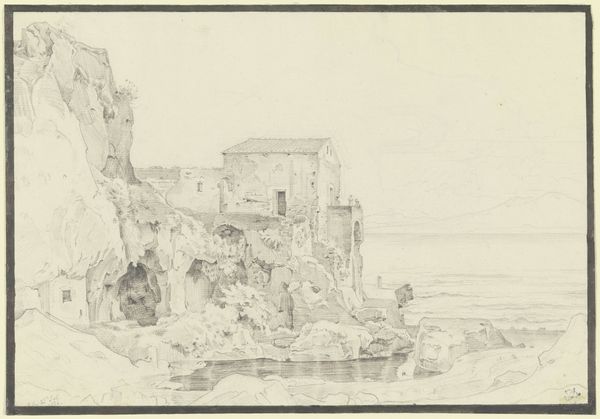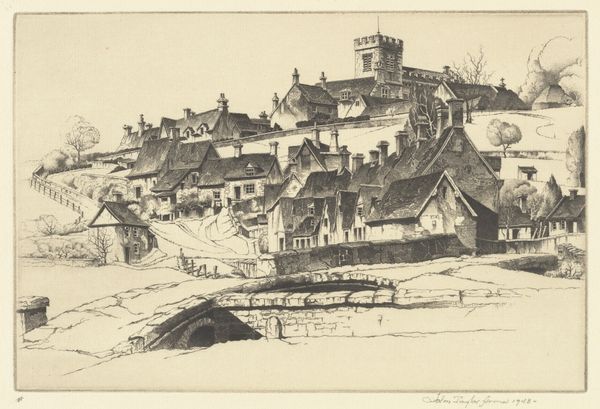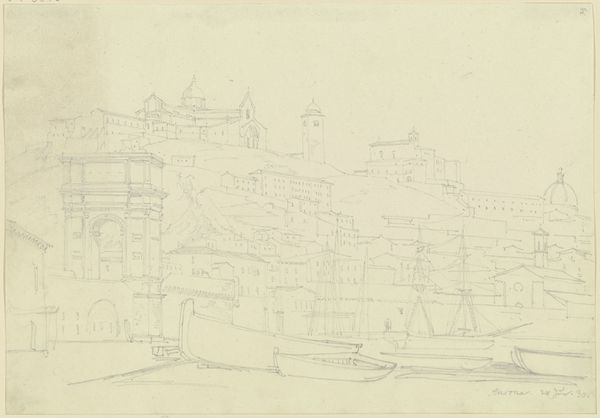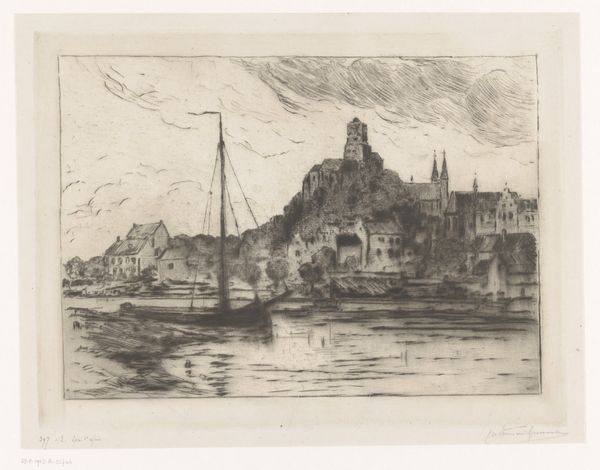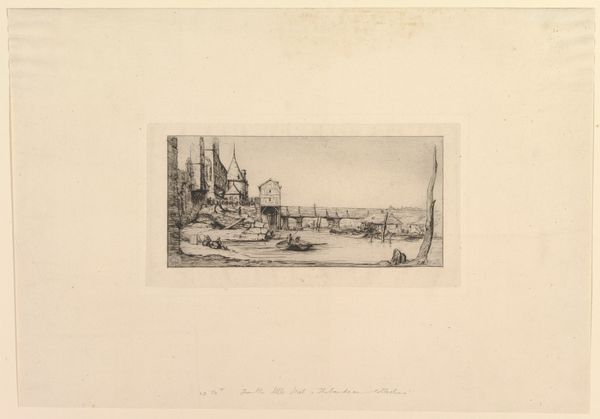
print, etching
# print
#
etching
#
asian-art
#
landscape
#
etching
#
cityscape
Dimensions: height 237 mm, width 277 mm
Copyright: Rijks Museum: Open Domain
Curator: Let’s turn our attention to "Woningen en tempels aan de Ganges in Benares," or "Houses and Temples on the Ganges in Benares," an etching possibly created between 1914 and 1922 by Wijnand Otto Jan Nieuwenkamp. What are your initial impressions? Editor: It feels intensely layered. There is this palpable sense of verticality as structures rise along the Ganges, conveying the bustling, vibrant nature of human and spiritual life intertwined. The contrast between light and shadow feels dramatic. Curator: Yes, consider how the lines create texture, delineating architectural forms from natural elements, giving spatial depth, yet also flattening the pictorial plane. It shows Nieuwenkamp’s careful, methodical working process. Editor: Looking at the clustered arrangement of housing and temples, I am struck by the spatial hierarchy; these structures loom with a certain grandeur against the river below. We need to think about how this placement affects our understanding of societal stratification and how architecture historically upholds power. Curator: Undeniably, the composition showcases a command of perspective. Notice how the artist guides your gaze, controlling where your eyes focus within the work; through subtle variations in linework, creating contrast. It’s quite masterful. Editor: That is an interesting approach; it feels critical to examine the social context. It's impossible not to consider this river—a sacred space of pilgrimage and ritual—within the larger picture. Who is given access, and who is restricted in engaging with these spiritual traditions along the ghats? These visuals can unveil deep histories about gender, caste, and privilege. Curator: Of course, there is the possibility for many readings, both politically conscious or not. We must acknowledge how it is essentially Nieuwenkamp’s stylistic interpretation. His emphasis on meticulous linear details forms the overall impression, which transcends social narratives and creates aesthetic meaning in itself. Editor: I appreciate your emphasis on the stylistic—it draws the focus towards the sheer, skillful control. Thinking about these details can serve towards more critical engagement. Curator: A worthwhile discussion, which highlights how formal observations can intertwine to enrich broader cultural interpretations. Editor: Exactly, blending our analytical and contextual viewpoints reveals an image with many possible and exciting entry points.
Comments
No comments
Be the first to comment and join the conversation on the ultimate creative platform.
